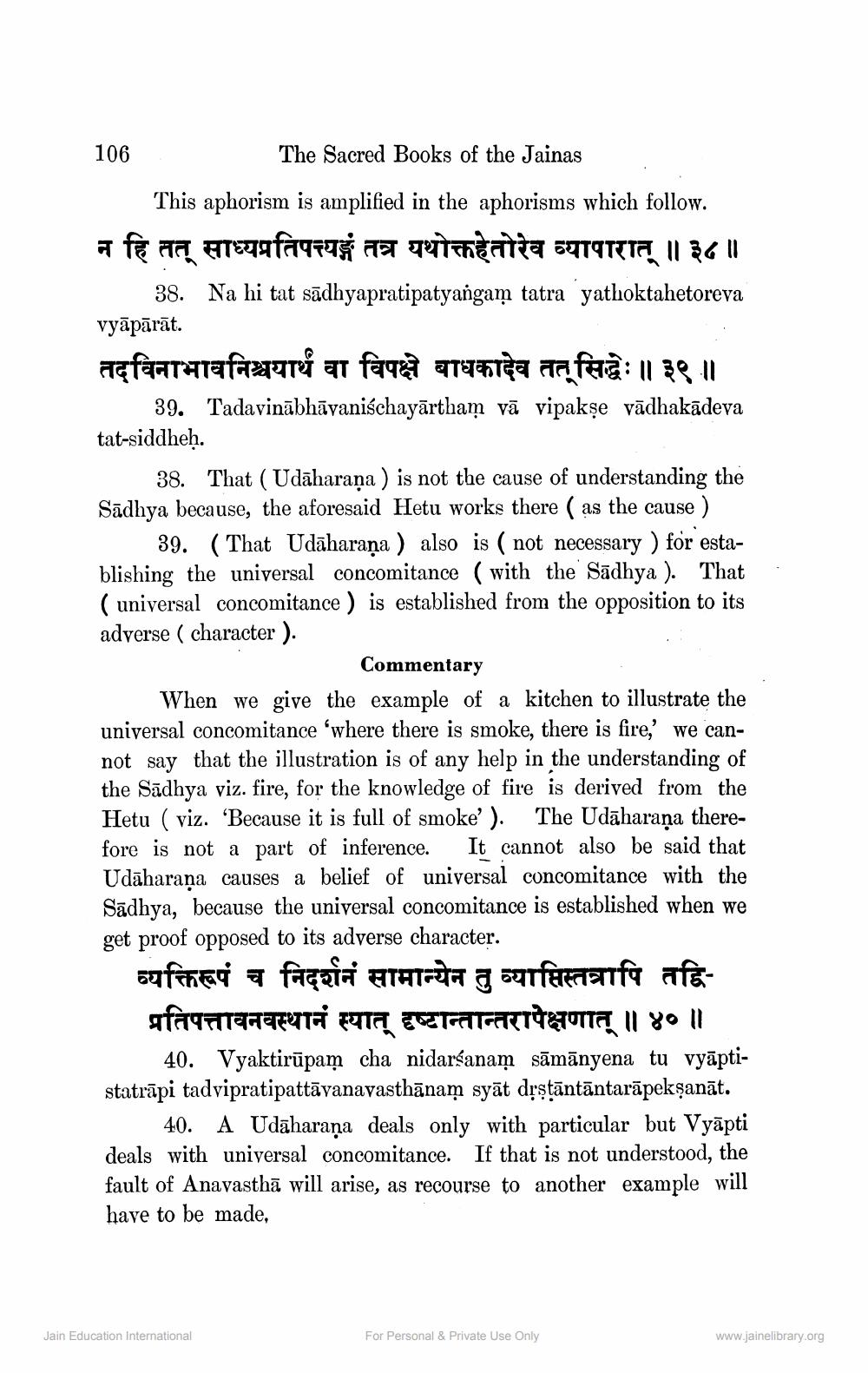________________
106
The Sacred Books of the Jainas This aphorism is amplified in the aphorisms which follow. न हि तत् साध्यप्रतिपत्यङ्गं तत्र यथोक्तहेतोरेव व्यापारात् ॥ ३८ ॥
38. Na hi tat sādhyapratipatyangam tatra yathoktahetoreva vyāpārāt. तदविनाभावनिश्चयार्थं वा विपक्षे बाधकादेव तत् सिद्धेः ॥ ३९ ॥
39. Tadavinābhāyaniśchayārtham vā vipakşe vādhakādeva tat-siddheh.
38. That (Udāharaṇa ) is not the cause of understanding the Sādhya because, the aforesaid Hetu works there ( as the cause )
39. (That Udāharaņa ) also is ( not necessary ) for establishing the universal concomitance ( with the Sādhya ). That ( universal concomitance ) is established from the opposition to its adverse ( character ).
Commentary
When we give the example of a kitchen to illustrate the universal concomitance 'where there is smoke, there is fire,' we cannot say that the illustration is of any help in the understanding of the Sadhya viz. fire, for the knowledge of fire is derived from the Hetu ( viz. 'Because it is full of smoke'). The Udāharaṇa therefore is not a part of inference. It cannot also be said that Udāharaṇa causes a belief of universal concomitance with the Sadhya, because the universal concomitance is established when we get proof opposed to its adverse character.
व्यक्तिरूपं च निदर्शनं सामान्येन तु व्याप्तिस्तत्रापि तद्विप्रतिपत्तावनवस्थानं स्यात् दृष्टान्तान्तरापेक्षणात् ॥४०॥
40. Vyaktirūpam cha nidarśanam sāmānyena tu vyāptistatrāpi tadvipratipattāvanavasthānam syāt drstāntāntarāpekşanāt.
40. A Udāharaña deals only with particular but Vyāpti deals with universal concomitance. If that is not understood, the fault of Anavasthā will arise, as recourse to another example will have to be made,
Jain Education International
For Personal & Private Use Only
www.jainelibrary.org




